A Couple Late Winter Wonders
While out trailing some domestic Dogs (Canis lupus familiaris), Short-tailed Weasel (Mustela erminea), and Red Fox (Vulpes vulpes), I encountered a couple of things that I did not know about and decided to examine. This post is just detailing those things a little more and sharing whatever information I can find so far.
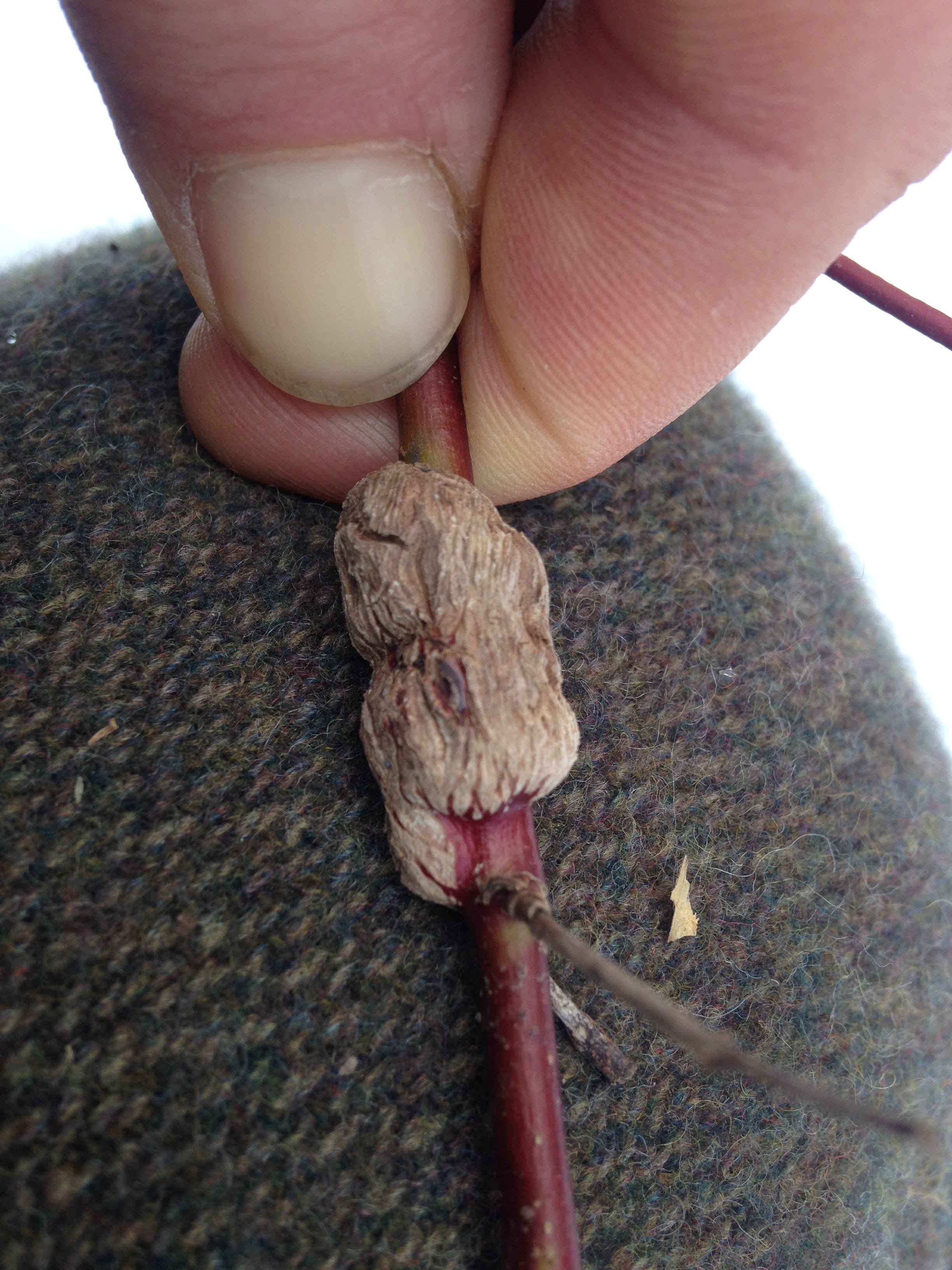
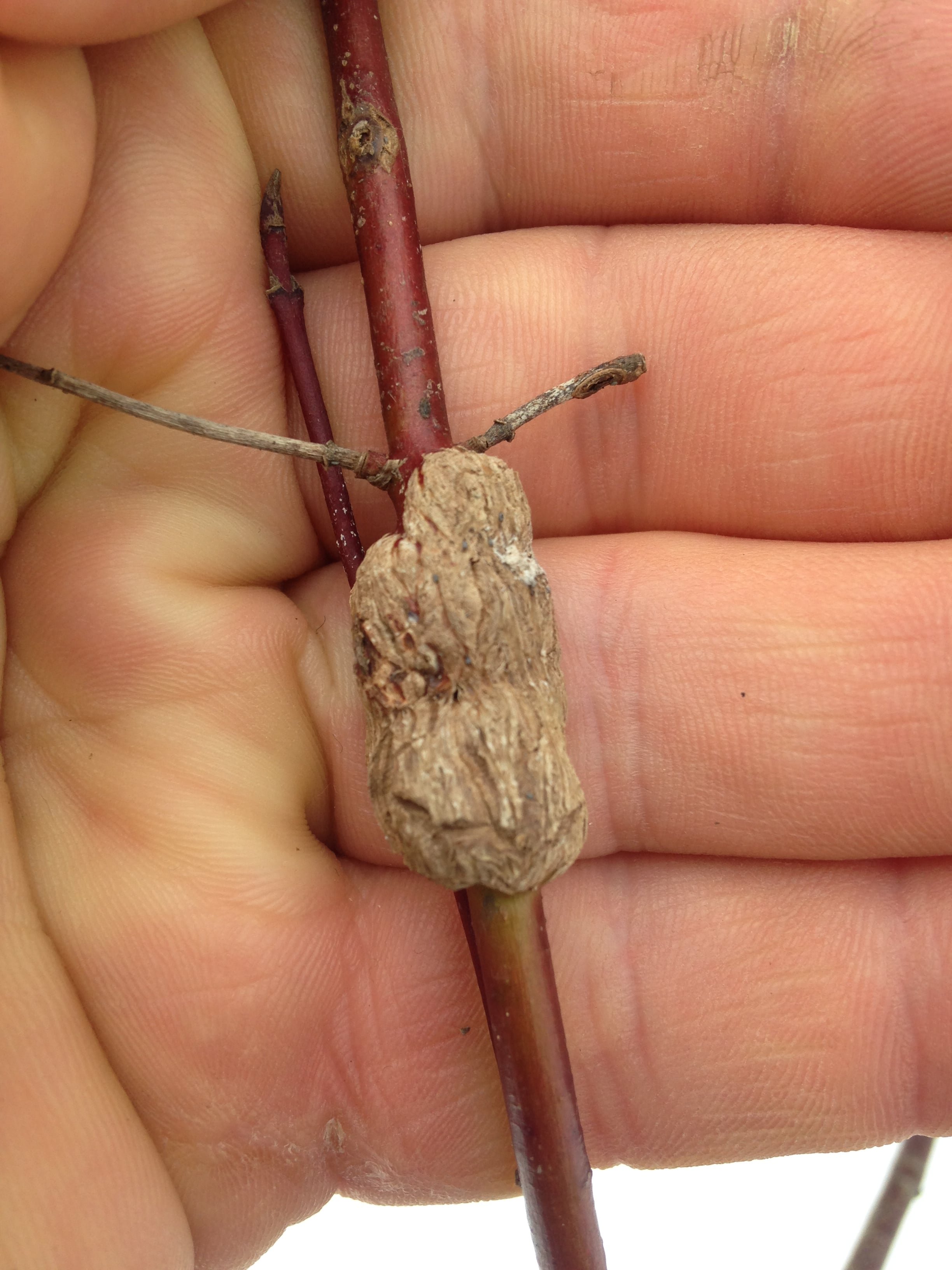
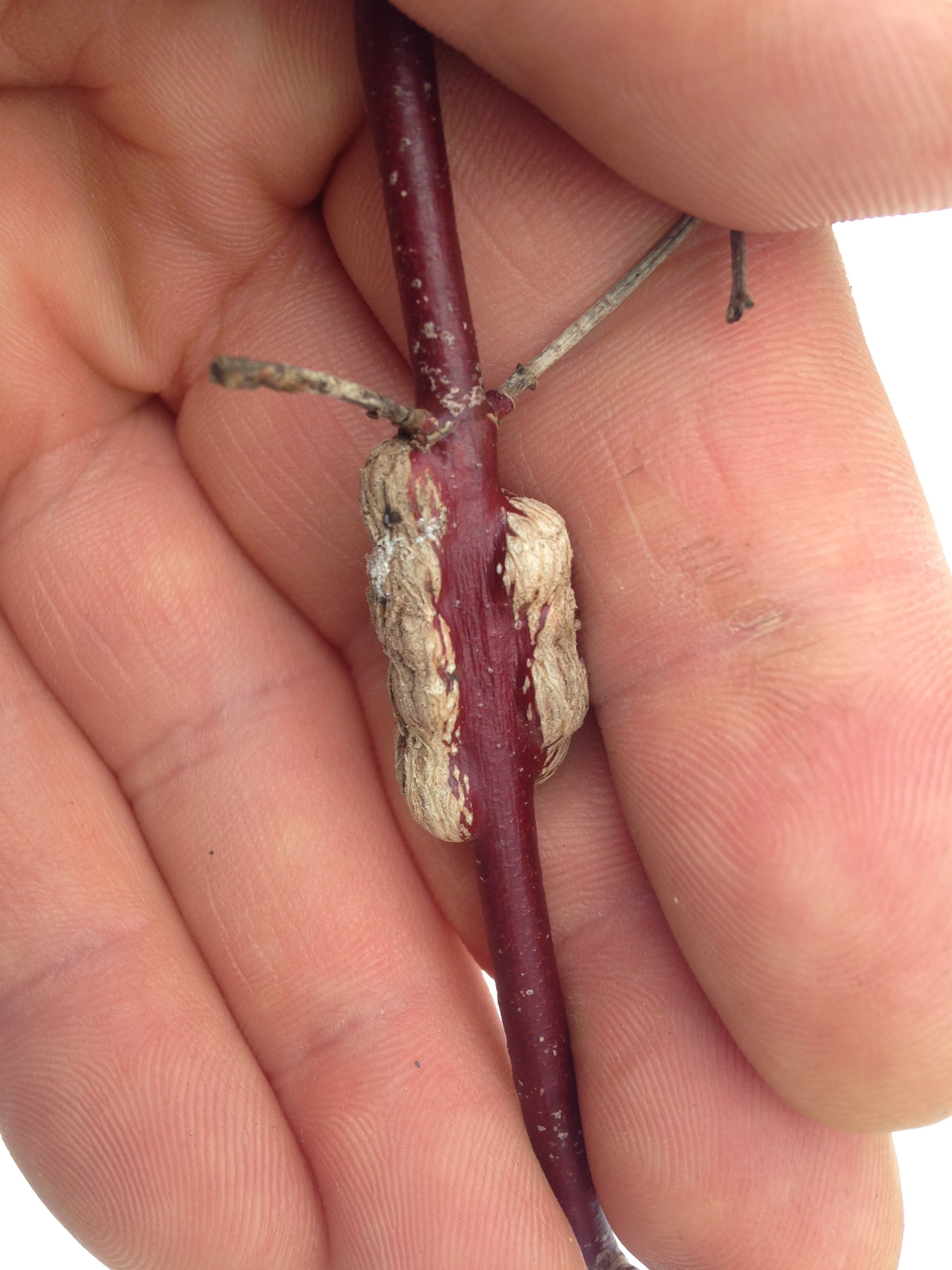
I was heading close to the power lines which cut across the river and the associated cut line off of the main trail when I saw this strange brown shape on the side of the Red-Osier Dogwood (Cornus sericea) shoot. The mass reminded me of a European Mantis (Mantis religiosa) ootheca, but after I stopped and pulled the branch in close I realized that it was not just something attached to the twig but instead growing as part of the twig. The structure was solid, woody, and about 25 mm (1 in) long x 13 mm (½ in) wide. The bulbous form emerged from one side of the Red-Osier Dogwood twig but the opposite side of the twig seemed generally unaffected.
I was taking a photo of the galloping gait of the Dog as they passed under a Silver Maple tree (Acer saccharinum) when I noticed the growth on the Dogwood. Since taking a photo of this first encounter, I have found another example on another Red-Osier Dogwood maybe a kilometer East of where I found the first, so I imagine this phenomena isn’t too rare.
My first thought after a bit of research was that this was from the Dogwood Club-gall Midge (Resseliella clavula) but as I look at other photos online of the clubgalls themselves it feels like I am forcing that i.d. as the shapes of the galls are pretty different. The clubgall usually occurs at the tips of the branches, and this one was in the middle. The clubgalls are narrower at the base and then widen towards the top. There are often many clubgalls on a plant, but I was only finding one of these on the plants I found them on. With these considerations, I am doubting that this is a club-gall, but I don’t really know of any other options yet. Perhaps this one is still uncertain or maybe it is a Club-gall and I just need to see more evidence? I have never reared an insect from a gall but it seems like it could be fun. A Spring project perhaps?
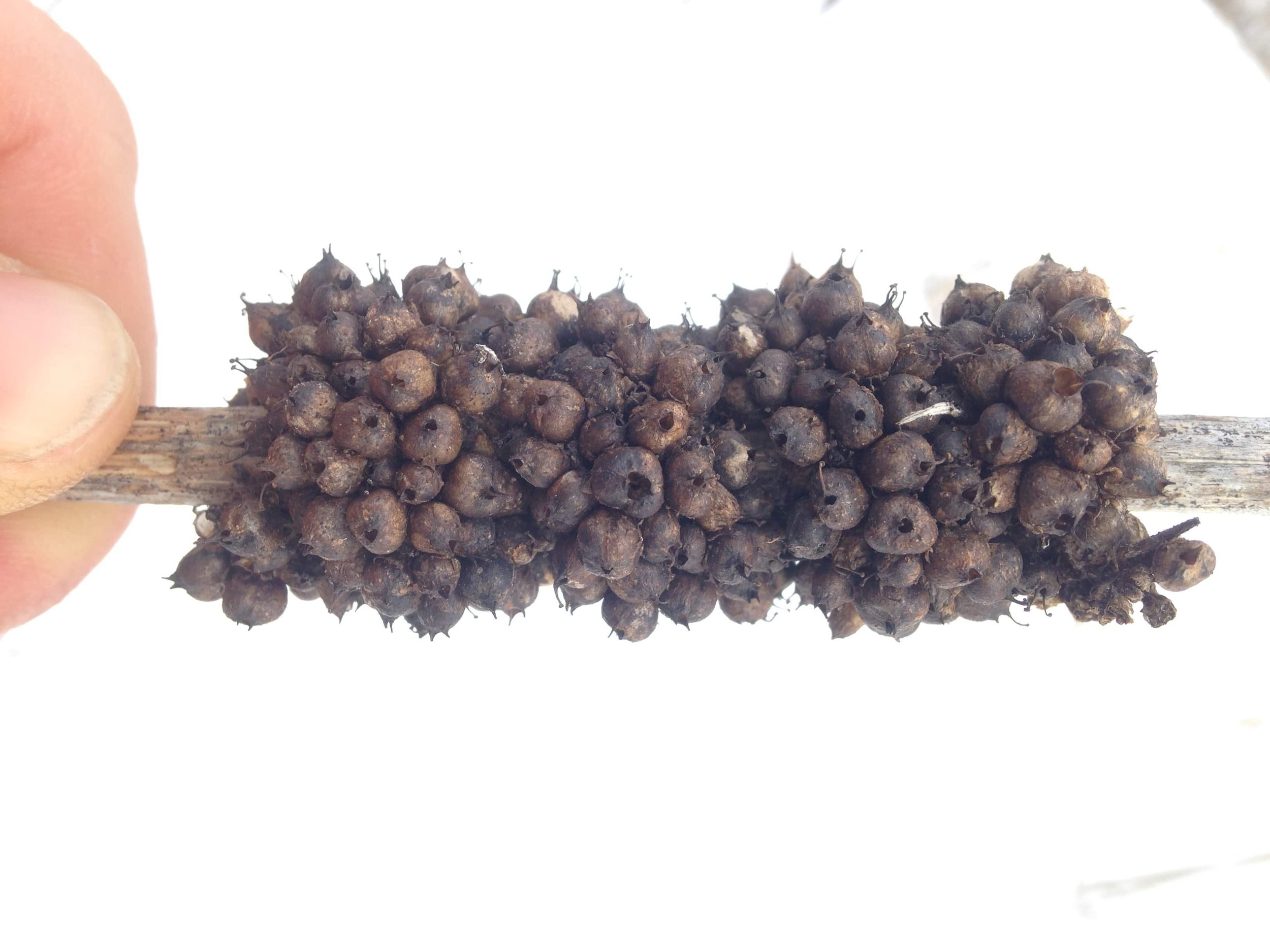
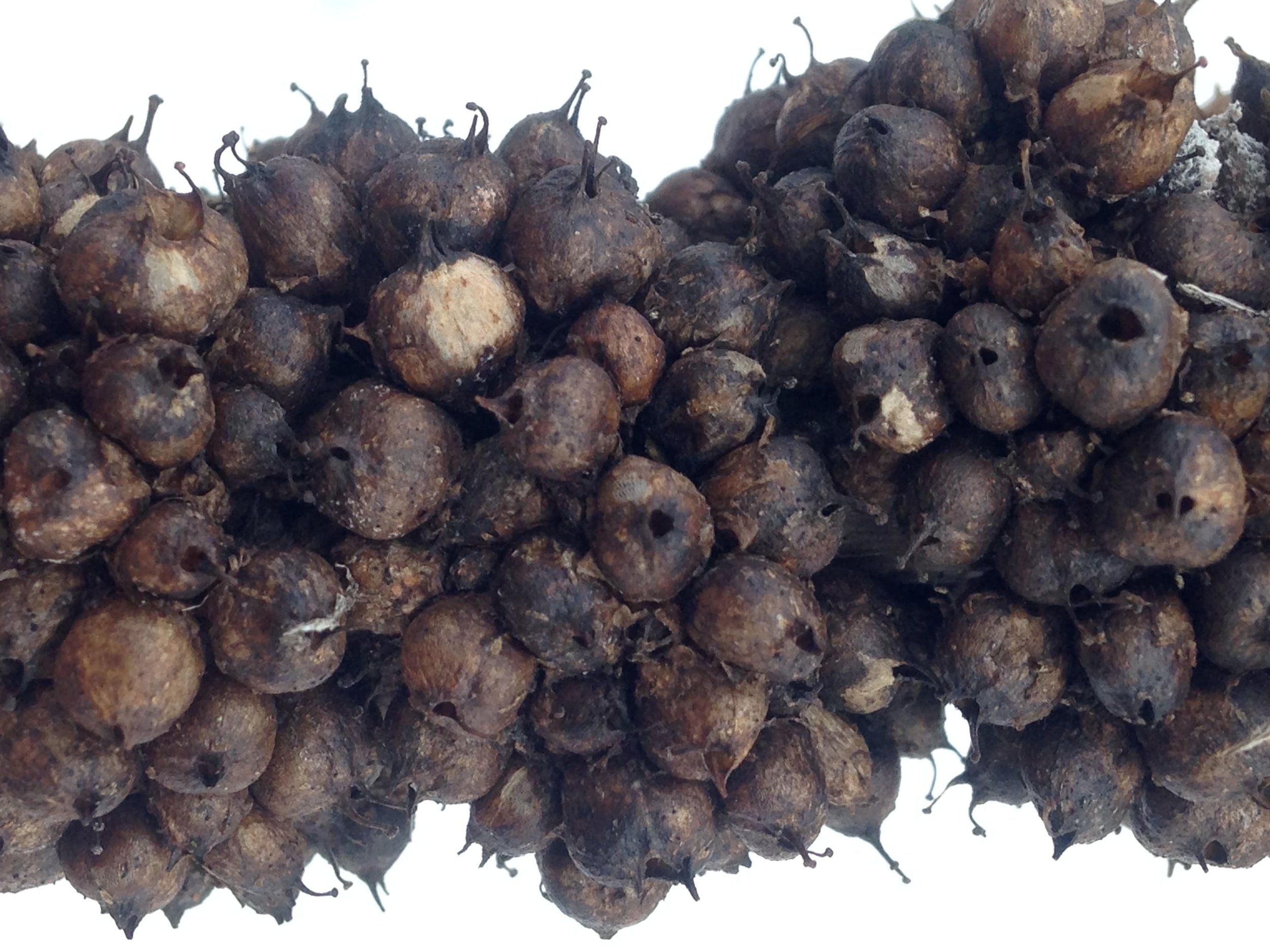

The same day that I found the first gall on the Dogwood as mentioned above, I came across this strange collection of crusty round somethings at the base of a Spotted Joe-Pye Weed (Eutrochium maculatum) and later, the stalk of a Stinging Nettle (Urtica dioica). I wasn’t sure if these little bulbous forms were seed pods which had opened or insect eggs which had hatched. I ended up brushing some of the round objects away with my thumb only to discover the remnants of a vine coiled around the stalk. It seemed that this was indeed a plant, but I wasn’t sure how to deduce which. I ended up asking on the subreddit /whatsthisplant for help and it wasn’t long before someone chimed in with Compact Dodder (Cuscuta compacta). This was very helpful, but also a little bit confusing. The i.d. suggestion was useful in pointing me in the direction of Dodders, or the Cuscuta genus, but when I did some follow up research it seems like there are more common Dodders in my area such as Cuscuta gronovii, or Swamp Dodder. My books though do not offer descriptions of multiple species in the Cuscuta genus so I can’t compare to sort out the difference. What the books offer are descriptions of the flowers of the Swamp Dodder, which seems to imply that the Swamp Dodder is more abundant than the Compact Dodder. I decided that this needed a little bit more in depth research then just my usual books so I broke out the extra tools : Flora of Wellington County (Frank and Anderson, Wellington County Historical Society, 2009), and Inaturalist.org. I referenced these both because they offer historical and modern records specifically to my region. There are no books or tools that I know of that feature more local perspectives.
Flora of Wellington County notes two different Dodders in my area: Field Dodder (Cuscuta campestris) and Swamp Dodder. When I checked out Inaturalist, the only Cuscuta identified to species in my area was Swamp Dodder. I think am going to settle on the Swamp Dodder, Cuscuta gronovii until some other information comes. I’ll have to check out the area next Summer and see what I can find.
On the topic of Dodders, they are pretty cool. With no leaves, most Dodders have limited ability to photosynthesize which means that even those species which do have a little must attach themselves to a host plant, in the cases I found, Joe-Pye and Nettle. The Dodder sprouts from seed, then waves around smelling for specific chemicals their host plants give off. If they do not find the host, the new shoots will die after 5-10 days. If a host is found, the Dodder shoot wraps itself around the Joe-Pye host and then grows a rootlike structure (haustoria) that grows into the vascular structure of the Joe-Pye, allowing the Dodder to then remove sugars and nutrients from the Joe-Pye. The original root of the Dodder then dies and it uses the host, or multiple hosts, to stay alive.
To learn more :
Dogwood Club-gall circular from the Connecticut Agricultural Experiment Station, 1964
Dogwood Clubgall Midge - PDIC Factsheets
Parasitic plants of the genus Cuscuta and their interaction with susceptible and resistant host plants
Dodder management guidelines
